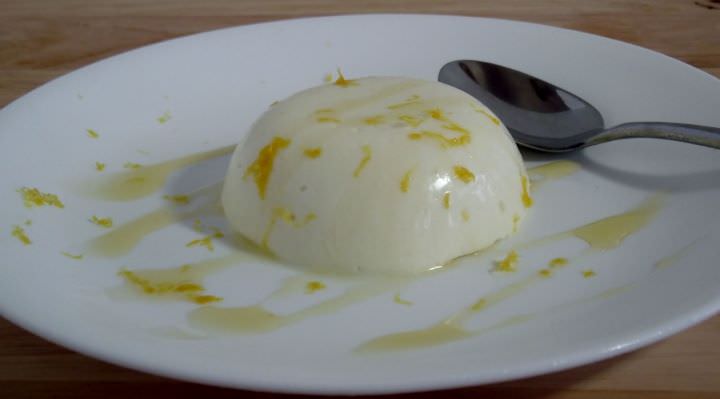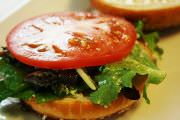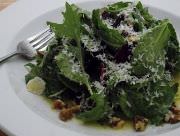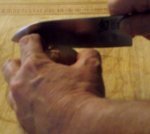An Easy Panna Cotta Recipe
Panna cotta or, literally translated, cooked cream is one of those culinary surprises, you know, where the whole is greater than the sum of its parts.
When Italian panna cotta is done properly it should be delicate, sexy, and have just enough strength to hold its shape. The Italians really do know a thing or two about food.
If you've never tasted it I am sad for you, but now you can make it, yay!
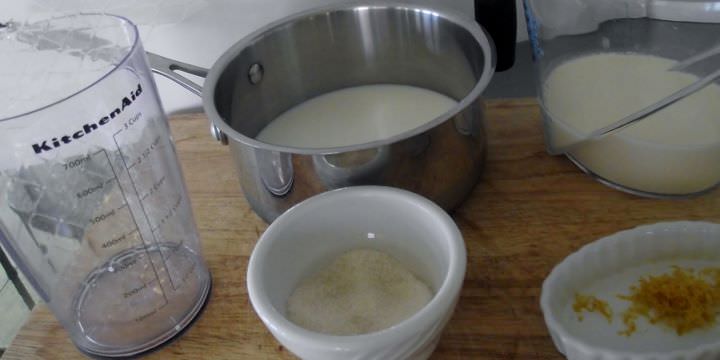
Ingredients for panna cotta: milk, sugar, lemon zest, gelatin sheets, and cream.
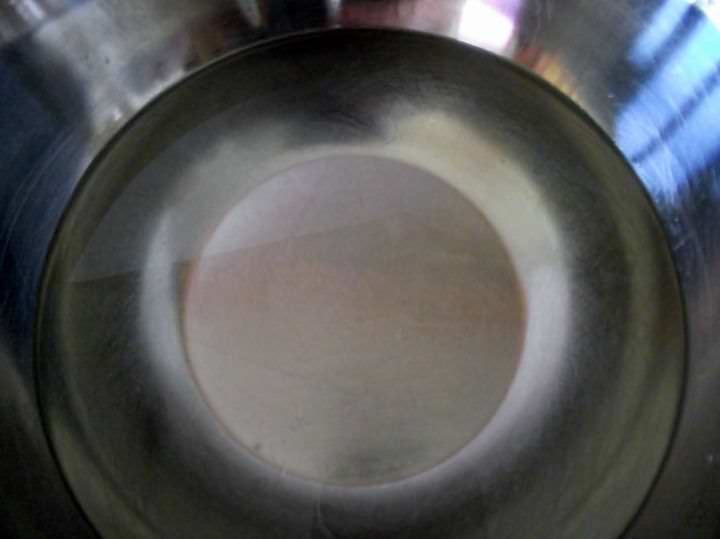
Though you can barely make out the sheets they are soaking in water.
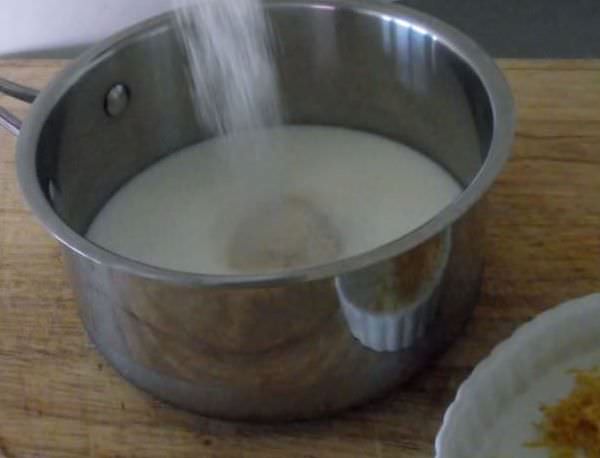
Combine the milk, sugar, and lemon zest.
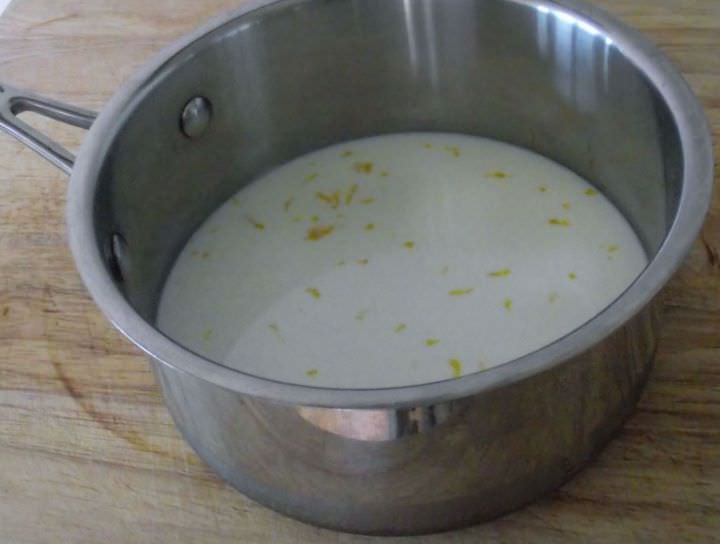
Combine the milk, sugar and lemon zest in a 1 liter / 1 quart saucepan. Bring to a simmer, stirring occasionally to dissolve the sugar. When the sugar is completely dissolved remove from heat and set aside. Allow the mixture to infuse for 20 minutes.
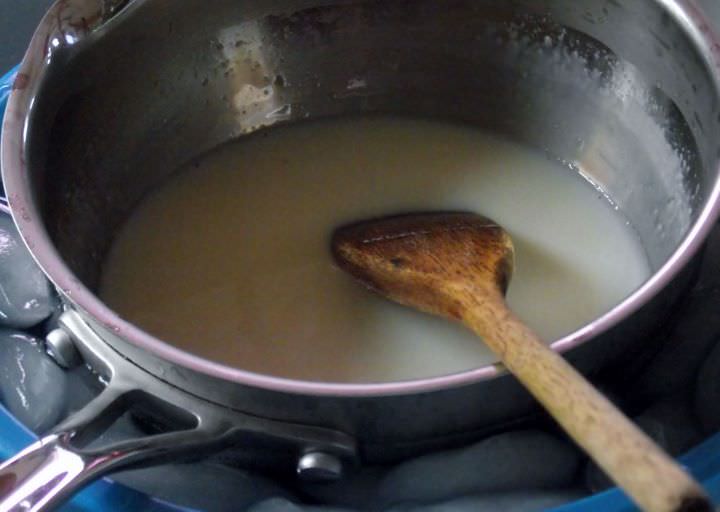
Add the gelatin sheets to
the milk mixture and whisk to thoroughly dissolve. Place
the small mixing bowl into the bowl with the ice. Add enough water so
that the ice bath comes up to the level of the mixture in the small
bowl.
Stir the mixture until it begins to set. Whisk the mixture
again to smooth it out.
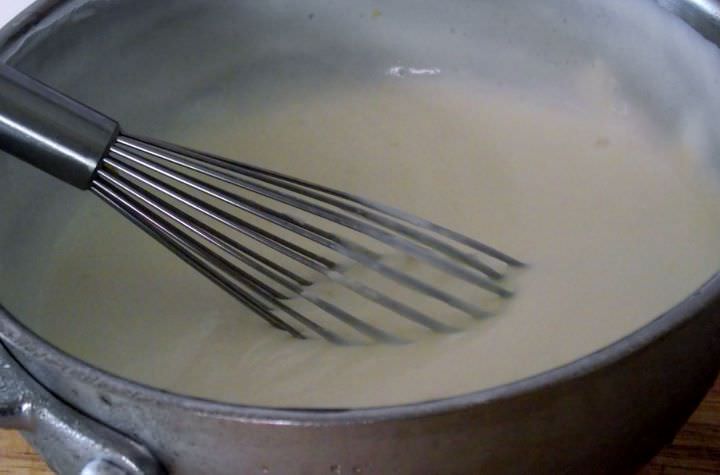
Fold the whipped cream
into the milk mixture, in batches - one-third at a time.
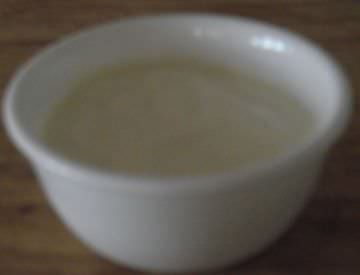
Transfer the mixture to 6 ounce serving bowls or cups and place in refrigerator until completely set.
About Gelatin
Edible gelatin is an odorless, tasteless thickening agent that forms a gel when combined with liquid and heated. It regains a jelly-like consistency when chilled.
What Is Sheet Or Leaf Gelatin
Sheet Gelatin, or Leaf Gelatin, works like granular gelatin, or gelatin powder, the kinds in your local grocery store.
Rather than a powder, it is produced in sheets or leaves of gelatin film. The sheets dissolve more slowly than the granulated form, but produce a clearer gel.
Why Professionals Prefer Sheet Gelatin Over Powdered Gelatin?
Chefs and professional cooks use sheet gelatin because it makes a clearer gelatin with a purer flavor. As well, they also prefer sheets for their ease of use. The sheets can be counted rather than weighing out powder and there is no chance of undissolved granules.
How To Use Sheet Gelatin
Soak sheets of gelatin in a bowl of cold or iced water for 5 to 10
minutes. (Use about a cup / 250ml of cold water per sheet.) Once soft,
lift sheets from the cold water. Wring gently to remove excess water.
Add
sheets to liquid called for in the recipe. Heat the mixture, stirring
until the gelatin is dissolved. Do not boil, boiling, breaks down the
gelatin and it will not set.
Usage and Substitution
One sheet Gelatin to 1/2 cup / 125ml Liquid.
You can successfully substitute powdered, granular or sheet gelatin in any recipe by using the following formula:
- 1 sheet gelatin equals, 2-3 g powdered gelatin, or about 1 tsp.
3 sheets equals, about 1 envelope Knox granulated gelatin.
Panna Cotta Delicate Sexy And Sublime
The original recette panna cotta, or panna cotta recipes did not contain gelatin, at all. they had milk, cream, sugar, and egg whites as well as some flavorings like vanilla or cinnamon. They were literally cooked cream recipes that were soft set with egg whites.
Over time gelatin became the standard thickener and it moved from being a cooked cream dessert to being a dessert set with gelatin.
When you look over the ingredients list for the panna cotta recipe, it doesn't seem like much until you take a bite. In that instant, the taste-bud epiphany hits your brain like a freight train and the 'aha' settles over your soul. That is when you realize why Nigel Slater said, "this is the dessert you might consider if angels were coming to dinner."
Panna Cotta Recipe With Lemon Zest
- Yield: 6 servings
- Prep Time:30 minutes
- Cook Time: 10 minutes
- Time To Chill: 8 to 24 hours
Ingredients
- 415 ml / 14 ounces whole milk
- 100 grams / 3-1/2 ounces of sugar
- Zest from 1-1/2 lemons
- 3 gelatin sheets, soaked in water (See Notes)
- 475 ml / 16 ounces heavy cream
Method
- Combine the milk, sugar and lemon zest in a 1 liter / 1 quart saucepan. Bring to a simmer, stirring occasionally to dissolve the sugar. When the sugar is completely dissolved remove from heat and set aside. Allow the mixture to infuse for 20 minutes.
- Meanwhile fill a medium mixing bowl with ice and set aside. You may want to place a kitchen towel underneath the bowl to catch any moisture.
- Add the gelatin sheets to the milk mixture and whisk to thoroughly dissolve. Strain the mixture through a fine mesh strainer, into a small mixing bowl - about 2 liters / 2 quarts. Set aside.
- Whip the cream by hand or in the bowl of your stand mixer, to soft peaks. Set aside.
- Place the small mixing bowl into the bowl with the ice. Add enough water so that the ice bath comes up to the level of the mixture in the small bowl.
- Stir the mixture until it begins to set. Whisk the mixture again to smooth it out. Using a rubber spatula fold the whipped cream into the milk mixture, in batches - one-third at a time.
- Transfer the mixture to 6 ounce serving bowls or cups and place in refrigerator until completely set.
- Once the panna cotta is set, wrap the bowls with plastic wrap.
- You
can serve the dessert in the cup it is molded in or you can un-mold it
by placing the cup in warm water just long enough to loosen the dessert.
Then invert it onto a serving plate.
Notes
- Do not over-soak the gelatin or it will completely dissolve and you will have to start over.
- Desserts made with gelatin need to chill at least eight hours, but twenty four hours is best.
- Do not freeze desserts made with gelatin. It will break down the gel and cause weeping of the liquid as it thaws.
